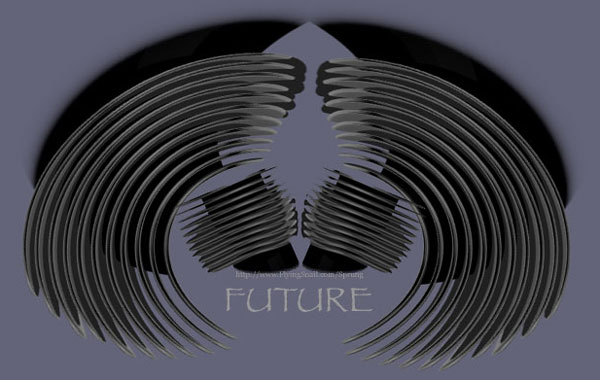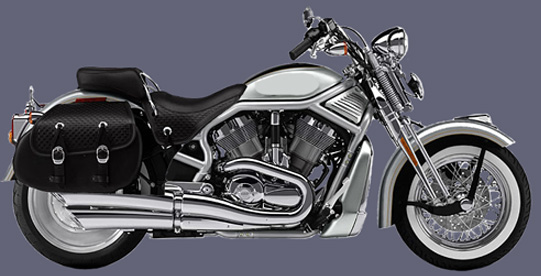

Reverse
Engineering the TC88-Beta
;-) Just kidding W.G. (-;
Sprung Stages
The following are opinions ...not advice.
Stage 1.0
Less Weight Equals Faster
I am a solo rider 99% of the time and live in the mountains. It takes more than one road hour of 'twisties' to get to flatland or freeway.
My RPM range is constant between 2500 - 3500 and only exceeded, sometimes, during passing and freeway driving.
The first thing I want to know is how much a motorcycle weighs with a full tank of gas.
Although a motorcycle's weight is listed in the Owner's Manual, it always seems to be a little off, versus 'out the door on the scale' weight.
I weigh myself with full riding gear and toolkit and add them for total motorcycle / rider weight.
The next thing I do is take extra weight off the bike. For example, rear passenger pegs, tank emblems, replaced the 2-up seat with solo, etc. Each of these items are weighed and subtracted from total bike weight.
I am within 5 pounds of my base height / weight.
Less weight equals faster and is the Least Expensive and ;-) perhaps most healthful (-; of Sprung Stage Upgrades.
Stage 1.1
Road Tools
A tool in an experienced hand can be a fixer and in the inexperienced hand a destroyer.
Ask yourself how good of a wrench/mechanic am I?
If your 'track record' is good, proceed with caution.
If your 'track record' is not good, remember "things don't change, people do", and it's 'your call'.
If you 'really' want to learn, consider taking a basic auto maintenance course at a Community College or Adult Night School (usually located at a local High School), ask questions, then make your decision. (fwiw/imo) Basic maintenance is easy and saves money, if one takes their time to learn. The manual is your friend.
I am reminded of the movie character Davy Crockett who said, "Be sure you're right, then go ahead.", which was conditioned into my brain during the '50s and good advice.
(OT: btw/fwiw) Fess Parker gave me a ride in his Porsche once, from Hollywood to Huntington Beach, during '64. He really was a nice guy and spent most of the time talking about his television series and character, Daniel Boone.
The r.m.h. FAQ has a good reference for Packin' Tools .
During my 'younger years' tools were kept in a shaving kit, rolled up in a blanket, and tied to the handlebar...oh, and a few heavy duty garbage bags worked fine as an emergency temporary tent.
One of the few tools I had, which is different from the items mentioned in the above FAQ, was a 24 oz. Ball Pein Hammer Head welded to the handle of a 1/2 inch Drive Flex Ratchet.
The only part missing from this section is Keeping Your Bike Clean and I find it amusing very few have read the MoCo's ;-) Give Your Bike A Bath (-; (ymmv).
;-) For the record ... currently, and probably due to age, the toolkit has been staying home, and I find myself riding with "minimalist" requirements, and a roadside service card. (-;
Stage 1.2
Shop
Tools
To be perfectly clear, these are basic tools for basic maintenance (oil changes, spark plugs, adding and removing exterior parts / etc.) and discussed in most motorcycle forums / list discussions / etc. The search engine is your friend.
Here is 'some' of what I have:
The MoCo Manual & Parts Catalog (for each bike)
Several metal milk crates, pieces of carpet, and 3 foot long, 4x4 & 2x4 inch wood blocks
Motorcycle lift and accessories (tie downs / etc.)
Although not tools, I keep spare O-rings, gaskets, nuts, bolts, washers, screws, bulbs, fuses, and spark plugs in separate (based on vehicle) 2' x 1' x 1' metal cabinets, that have separate plastic slide drawer compartments on both sides. Did I mention spare O-rings?
I have most accompanying hand tools [The MoCo Manual will list "Specialty Tools" and their part number, if they are needed. ;-) There is also an interesting guide, listed under "Tool Safety", in the Manual index.(-;] and Torque Wrenches, which leads to another story.
The Wrench who taught me seldom used a torque wrench and did something I thought was interesting.
One of the first things he did was hold a bathroom scale against a wood beam in the shop and had me push on it as hard as I could with one hand, then the other, and both. He told me the weight that registered was my "base push/pull power in pounds".
He had me spend part of my time tightening bolts, with a long handle wrench, on an old automobile engine; verifying them with a torque wrench, when I thought I was close. This taught me, a lot, about removing broken bolts, tightening things on the road, and ;-) Marklar.
[Torque wrench addendum - When I torque something to 80 ft. lb. (foot pounds), I do it in stages of, 20, 40, 60, 80, which is considered "overkill" by my ;-) learned mentors who say 30, 60, 80. Ummm... Different Strokes ? (-;]
Another asset is a local motorcycle club. Sometimes these folks have a fully equipped club garage and there always seems to be one knowledgeable person, around, willing to help or guide.
Stage
1.3
Engine Modifications
Maybe it's me, but everyone I know into motorcycles has more than one motorcycle; usually one or more ready to run, and one or more on a lift undergoing some change.
Select your motorcycle carefully and based on how you anticipate using it, .... or plan to get more than one.
Before I forget, there are motorcycle training classes for beginners, intermediate, and advanced riders. Take one!
Stage by stage can be a waste of time and money if not planned well.
Before making changes on 'anything' involving an engine get a Dyno Chart done and do it again when you finish your changes.
I look at the dyno chart as a 'report card' and thank everyone who has ever posted a chart with specs. Your effort, over the years, has helped a lot of folks ;-) including me!
If possible, always use more than one shop with a 'dyno'. Comparison is good (-;
Leave a new engine stock until it has 60,000 to 100,000 miles on it before making modifications (Remember, I am talking solo rider here, yes, there are exceptions, and 2-Up is a different story.)
If you can't resist, have 'need for speed', and don't mind having your front tire lift off the road, 'from time to time', consider starting at '107' ... and please, don't forget to get better brakes.
If I were in the above 'frame of mind', I would start with a used, high mileage, loved & cared for, motorcycle, and build a Stroker.
Modifying an original frame for 'fit' and 'extras' (rake, stretch, suspension, lowering, etc.) can save considerable paperwork, in some cases, and (imo) always find out, in advance, what your local DMV requires regarding frame identification.
;-) Most folks will know exactly what they want to do with their motorcycle after 60 to 100 thousand miles. (-;

[home]